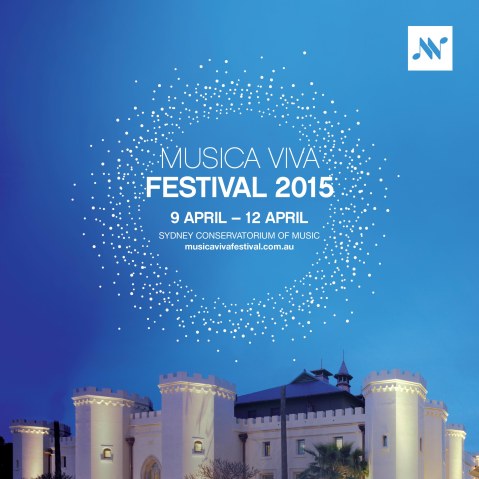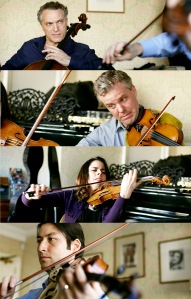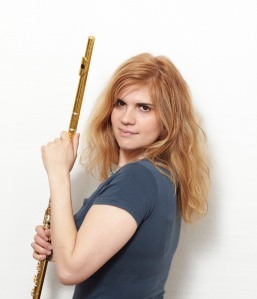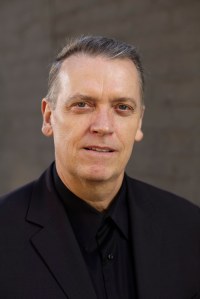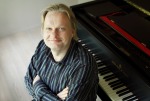On The Vine – March 2015
Welcome to Musica Viva Festival 2015, a concentrated explosion of music performance, learning, exploration and enjoyment that overtakes the Sydney Conservatorium of Music the week after Easter. Chamber music is a most incredible human endeavour, and its full spectrum being compressed into a few short days is an essential encounter for both the aficionado and the novice.
Our collaboration with the Australian Youth Orchestra and its remarkable Chamber Players Program once again brings exceptional young Australian musicians into the spotlight and under the microscope. Directed this year by renowned German cellist Nicolas Altstaedt, the Chamber Players spend a week learning from international masters imported to perform in the festival, and display their achievements in a series of concerts spread through the festival. Alumni of past AYO Programs, the Orava Quartet, perform for the first time in this year’s main concert events.
The Sydney Con provides the perfect location for this tightly packed series of events, and the Con’s staff contributes a special Showcase Concert on Saturday afternoon directed by Associate Professor of Music Dr John Lynch.
Internationally acclaimed cellist Mischa Maisky heads the register of wonderful musicians performing in the festival. It is a great thrill to welcome back some of the greatest artists who have appeared recently for Musica Viva – Serbian pianist Aleksandar Madžar, Armenian clarinettist Narek Arutyunian, the Doric String Quartet from the UK and the Pavel Haas Quartet from the Czech Republic. Brilliant young Bulgarian violinist Bella Hristova, winner of the 2013 Avery Fisher Career Grant and the 2007 Michael Hill International Violin Competition, makes her Australian concert debut. Outstanding Brisbane guitarist Karin Schaupp and accomplished Melbourne pianist Daniel de Borah round out the masterful cast of the main festival concerts, alongside their Sydney colleagues Kees Boersma, Umberto Clerici and Timothy Constable.
The 2015 festival features not only great masterworks of the classical canon, but also the world premiere of two works by Australian composers. Lachlan Skipworth’s first Piano Trio, and Natalie Williams’ Saudade octet will be performed for the very first time by some of the world’s finest musicians. Chamber music is not only alive and well; it is thriving and evolving before your very eyes at the Musica Viva Festival.
Carl Vine AO
Artistic Director
The 2015 Musica Viva Festival takes place April 9-12 at the Conservatorium of Music, Sydney. For more information, and to book your tickets, please visit: www.musicavivafestival.com.au
Musica Viva Festival 2013 – Day 2
We begin day two of the 2013 Musica Viva Festival with a live broadcast of Classic Breakfast on ABC Classic FM hosted by Emma Ayres. Early risers should head to the Music Café from 8am!
Next on the calendar are AYO Chamber Players masterclasses, presented by Pieter Wispelwey and Lambert Orkis. Then students and faculty of the Sydney Conservatorium of Music present Kurt Weill’s Little Threepenny Music followed by Paul Hindemith’s Konzertmusik for piano, brass and harps, op 49.
The afternoon presents a rare opportunity to hear pianist Lambert Orkis reflect on his decades at the pinnacle of chamber music performance. Lambert is perhaps best known for his partnerships with Mstislav Rostropovich and Anne Sophie Mutter, but did you know he is highly regarded for his performances on period instruments, and has also premiered a range of works by contemporary composers such as George Crumb?
At 3.30pm Lespets and Camden host a concert featuring some of the instruments from the Treasures of Cremona violin exhibition. This afternoon’s AYO Chamber Players concert includes works by Haydn, Mozart, Dvorak and Ravel. Carl Vine then interviews Sharon Bezaly and Hector McDonald in the Music Café.
The evening concert features Hector McDonald, Neal Peres Da Costa, Shaun Brown, Sophie Rowell, Kirsty Hilton, Sally Boud, Melissa Barnard, Benjamin Beilman, Ian Munro, Sharon Bezaly, Tamara Anna Cislowska and the Pacifica Quartet, in works by Beethoven, Butterworth, Brahms, Prokofiev and Shostakovich.Acclaimed harpist Alice Giles then presents a special multi-media performance commemorating the Centenary of the First Australasian Antartic Expedition of 1911-1914, of which her grandfather Dr Cecil T. Madigan was a member. Works include sentimental favourites mentioned by Madigan in his diaries, and music by Australian composers Larry Sitsky, Martin Wesley-Smith, Nigel Westlake, Jim Cotter and Joshua McHugh, as well as sounds of the wind through the harp in Antarctica, woven together with words and song into a seamless, full-length program.
Musica Viva Festival 2013 – Day 1
Our Festival musicians and the AYO Chamber Players have been in Sydney preparing for the Musica Viva Festival for a week already, and today the Festival begins in earnest. First on the program are two AYO masterclasses, presented by Pieter Wispelwey and Masumi Per Rostad.
In today’s Con Showcase, students and faculty of the Sydney Conservatorium of Music present William Walton and Edith Sitwell’s fascinating and unconventional Façade – An Entertainment for ensemble and reciter.
In the afternoon Ironwood presents a lecture-demonstration ‘A Different Sort of Brahms’. Ironwood specialise in historically informed performance and have recently been investigating how Brahms might have expected his work to be played. In this seminar they will examine Brahms’ Piano Quartet no 1 in G minor using period instruments. The same work is performed in tonight’s concert on modern instruments. It’s not a question of ‘right’ or ‘wrong’ but it should make for fascinating listening all the same.
In the AYO Chamber Players concert AYO ensembles present works by Haydn, Mozart, Brahms and Debussy. Then why not join Carl Vine in the Music Café In Conversation with Ian Munro and Alice Giles.The evening concert feautres the Goldner Quartet, Hector McDonald, Benjamin Beilman, Sharon Bezaly, Ian Munro, Lambert Orkis, Sophie Rowell, Sally Boud and Melissa Barnard in works by Mozart, Ysaye, Schubert and Brahms.
Musica Viva Festival – chamber music from many perspectives
 The 2013 Musica Viva Festival features a stunning array of international and local artists performing repertoire from Bach to Takemitsu and much in between. But the Musica Viva Festival is also an unparalleled opportunity to explore the world of chamber music from many different perspectives.
The 2013 Musica Viva Festival features a stunning array of international and local artists performing repertoire from Bach to Takemitsu and much in between. But the Musica Viva Festival is also an unparalleled opportunity to explore the world of chamber music from many different perspectives.
Don’t miss a range of events to deepen your Festival experience, from AYO Chamber Players masterclasses and concerts to a Q&A with instrument specialists, from your chance to try a cello to the Treasures of Cremona violin exhibition, from interviews with Festival artists to tours of the remarkable Sydney Conservatorium of Music.
If all the events leave you in need of a break, pop into the Bang & Olufsen Salon featuring a range of historical and documentary footage. Hungry? A coffee cart and the Agape organic food truck will be onsite throughout the Festival.
And if for some reason you can’t make it to the Festival yourself (why ever not?) you can hear it live on ABC Classic FM, or on the dedicated digital radio station ‘Musica Viva Festival on ABC Extra’.
Five Questions for Pieter Wispelwey – appearing at Musica Viva Festival 2013
Limelight magazine interviewed cellist Pieter Wispelwey for their April edition. Pieter will be in Australia for three months, and his first engagements in that time are as Director of the AYO Chamber Players program and performances in the Musica Viva Festival and CountryWide program. Here’s what Pieter had to say:
Five Questions for Pieter Wispelwey
from Limelight magazine, April edition
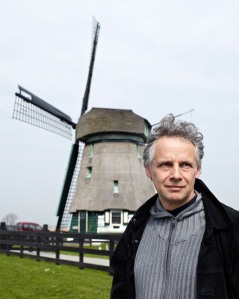 1. On your Australian tour you’re playing a trio of Eastern European concertos – Shostakovich, Prokofiev, Lutoslawski – all commissioned by the great cellist Mstislav Rostropovich. Did you ever meet him, and what does his legacy mean to you?
1. On your Australian tour you’re playing a trio of Eastern European concertos – Shostakovich, Prokofiev, Lutoslawski – all commissioned by the great cellist Mstislav Rostropovich. Did you ever meet him, and what does his legacy mean to you?
I did meet him a few times; he was very memorable and extreme in his behaviour, socially. If there were 100 people in a room, he would hug them all and kiss them all. He was a legend of course, who commissioned such a huge humber of masterworks from the great composers of his time.
2. Having recently founded the ensemble Quartet-lab, what do you love about playing chamber music compared to the big orchestral works?
I’m so used to a lonely musical existence as a soloist that it’s inspiring and healthy to interact closely with other musicians. The two violinists in Quartet-lab, Patricia Kopatchinskaja and Pekka Kuusisto, are quite extreme, wild violinists. We live in three different countries so it’s still extremely fresh when we meet. I had never played regularly in a quartet before; this is an experience I was hoping would happen in my life at some point.
3. For your 50th birthday last year, you recorded Bach’s Cello Suites – also on your Australian itinerary – for the third time. Did you feel you had something new to say having reached the milestone of 50?
Playing Bach is like eating and drinking, you feel the appetite every day. I hope to feel the appetite for the rest of my life. If I didn’t feel hungry anymore then I would know something was seriously wrong. The 36 movements of the suites are character pieces, which means you can colour in those characters in unlimited ways… A character can have different experiences.
4. Do you play the suites on a modern or Baroque instrument?
For the 250th anniversary of Bach’s death, the year 2000, I started abandoning the Baroque cello for the first time during a tour of Australia when I couldn’t travel with both instruments. The majority of my performances are now on Baroque but in a few days’ time I will play three suites on the modern cello, the Guadagnini. It’s quite strange to switch between – they are different worlds.
5. What keeps you coming back to Australia so often – and for three months this time?
I came to Australia for the first time in 1992 and then from 1995 I started working with the ACO on a regular basis; very, very happy times. We’ve done two CD recordings and numerous tours. My honeymoon coincided with the Huntington Festival in 2000, and I’m bringing my family now for the third time.
Goldner String Quartet at the Musica Viva Festival 2013
Musica Viva has a long relationship with the Goldner String Quartet, and we’re pleased they’ll be part of the 2013 Musica Viva Festival. In this video they speak about the repertoire they’ll be performing and the musicians they’ll be working with. The Goldners are also keen educators and will be tutoring ensembles from the Australian Youth Orchestra’s Chamber Players program. The AYO Chamber Players will perform their own concerts during the Festival – last year many of these were full to capacity so make sure you allow plenty of time to claim a seat!
Musica Viva Festival – Q&A with Carl Vine, Artistic Director
The festival is predicated on the relationship with the Australian Youth Orchestra’s Chamber Players Program and so needs a number of very high profile international artists to satisfy that need with the chamber players. For the sake of the festival concerts we need top level performers but we also need at least two string quartets, possibly a piano trio and then a mixture of other instrumentalists so that’s what you need to fill up seven concerts with music.
Then we look at who we can get – who are the most interesting and wonderful soloists that we can find – and Lambert Orkis came onto the radar and for an older generation, really established and wonderful chamber musician, you really can’t do much better. So we asked him what he would like to play and he gave us a list and that started to form the repertoire for the whole festival.
At the same time, we were looking for a director for the Chamber Players Program and that involved collaborating with the Australian Youth Orchestra because it is their program. We finished up with Pieter Wispelwey who is a fantastic soloist but also a great educator and communicator.
How will this festival differ in character to the 2011 festival?
It’s the players which really differentiate the festival. We present French Horn very rarely and Hector is a great horn player who doesn’t come to Australia very often. His involvement allows us to do the horn quintets and the Brahms horn trio which is a classic which we haven’t done for ages and, in fact, Hector last did it on tour for Musica Viva fourteen years ago.
Some of these artists will never have performed together before. How important is it that collaborators know each other before playing together?
It depends on the repertoire. With string quartet repertoire for instance it is vital that people have played it before, a lot. The works are so intricate and we have such high expectations of the performance. For things like piano quartets and mixed ensemble work, there isn’t such a fixed notion of how they need to go. The larger the ensemble, the more atypical the ensemble, the less important it is. But the vital thing always then is how good the individuals are at working in a team. That is the mark of great chamber players and it is the mark of your Lambert Orkis’ and your Pieter Wispelweys, that they can be thrown into any number of situations and work with others. And it’s the mark of the young Ben Beilman.
There are many rising stars on the international classical music scene- what is it about young Benjamin Beilman that makes him stand out?
Ben Beilman came to us through a group called Young Concert Artists in New York which is associated with the Lincoln Centre’s chamber series. We actually found Ben as one of their performers and looked at a number of his YouTube clips. These clips were made when he was nineteen and he just came across as a wonderful violinist. Then I was in London briefly last year and I went to see Ben playing at Wigmore Hall and he was every bit as wonderful as I expected, in fact he was more wonderful than I expected. Chatting to him afterwards, he was just such an unassuming and humble fellow, just great to meet.
And a little about you: You played trumpet until you fell out of a tree and took up piano and later the organ. Do you still play?
I stopped playing organ because I lost access to the organ when I left school. You can buy an electric one but it’s not the same. I stopped playing piano professionally in 1989 and I don’t really play anymore. I play a bit as I compose, I have to make sure it fits under the fingers, but otherwise I don’t play.
Do you miss it?
No. I thought I would, but I don’t. It’s very hard, and it’s very hard to keep it up. The reason I gave it up was because I would have a period of intense playing and then intense writing and then I would go back to intense playing again. I would discover that I was getting tension headaches and an actual hump in my shoulders from tension. I thought I just shouldn’t keep doing this.
How did you make the move from playing to composing?
I didn’t. It was at the age of ten when I took up the piano that I discovered what two musical lines were and that really excited me. I realised how composition worked. So I decided about the age of ten or twelve that I would be a pianist-composer. I played trumpet from the age of four and a half so I could read music before I could read English. It was always completely natural.
You can play, compose, conduct, debate and have some understanding of physics – what are you terrible at that you wish you were good at?
It would be useful if I was a better cook. I am an adequate cook. It just doesn’t interest me. I don’t have the fixation on the detail to do good dishes.
Carl Vine on the Musica Viva Festival
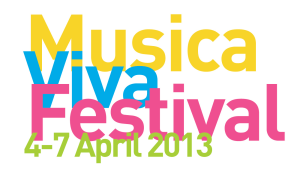 Chamber music festivals throughout the world generally feature a holiday setting or picturesque surrounds. While Sydney is hardly an eyesore, and the Botanic Gardens are extraordinary, mounting a music festival in a capital city remains a challenge, requiring the unique attributes that constitute the Musica Viva Festival.
Chamber music festivals throughout the world generally feature a holiday setting or picturesque surrounds. While Sydney is hardly an eyesore, and the Botanic Gardens are extraordinary, mounting a music festival in a capital city remains a challenge, requiring the unique attributes that constitute the Musica Viva Festival.
Our collaboration with the Sydney Conservatorium means that we can present all events in high-class purpose-built venues, conveniently connected by an impressive communal atrium space. Our collaboration with the Australian Youth Orchestra means that we can combine Viva’s two primary objectives of education and performance in a single hothouse environment encompassing multiple strands of the music/education spectrum.
The 2013 Musica Viva Festival is designed to offer every imaginable level of connection to the complete chamber music experience. From the main festival concerts featuring sensational international soloists and ensembles, through to recitals by the cream of young Australian musicians, masterclasses that dissect the entire process of concert preparation, and special workshops to enrich musical appreciation, every stone on the path to musical enjoyment is overturned.
The 2013 festival features some extraordinary artists, ranging from a brilliant young violinist at the start of a meteoric career to one of the world’s most renowned chamber pianists. A unique aspect of this festival is its intimate link with the Australian Youth Orchestra’s Chamber Players Program, arguably the most comprehensive specialised training course in the country. Directed this year by renowned cellist Pieter Wispelwey, dozens of our most talented young musicians will receive detailed firsthand instruction from the world’s best on how to enhance their chamber music skills. Discover precisely how many hours it takes to prepare a string quartet, uncover the secret language of professional musicians, or just witness the end result in the Chamber Players’ recitals.
The festival also includes three concerts by staff and students of The Sydney Con, to give a microscopic glimpse of the wealth of musical activity that continues daily in this world-class facility.
With 7 main concerts and almost 30 other recitals, masterclasses, seminars and events, this is a festival of uncommon depth and richness. Pick and choose from the ample options, or else simply dive in and immerse yourself in the entire experience.
Carl Vine
Artistic Director
Dene Olding & AYO premiere Carl Vine’s Violin Concerto
Murray Black, The Australian, July 22, 2011
“…Carl Vine describes his new violin concerto as a work of abstract music with no extra-musical explanation.
“The concerto form often lends itself to heroic, extroverted music, showing off a soloist’s virtuosity against a powerful orchestral background.
“Vine’s two-movement concerto, however, is a restrained, introspective piece. For the most part, the rhapsodic solo violin floats above a gentle orchestral accompaniment.
“Vine’s compositional springboard, he says, was ‘the curious quality often achieved by solo violin accompanied by an orchestra playing softly’.
“Hence, full orchestral tuttis are used sparingly and Vine largely treats the orchestra as an ever-changing series of chamber ensembles.
“Gently throbbing strings and fluttering woodwind figures dominate, periodically coloured by muted brass chords and tinkling washes of harp and tuned percussion.
“Violinist Dene Olding gave a commanding performance. His strong sense of line and full-bodied tone allowed Vine’s expansive solo themes to take flight. The faster sections were impressively clear and sinuously phrased.“Conductor Thomas Dausgaard and the Australian Youth Orchestra realised Vine’s inventive accompaniment with nuance and sensitivity.”
Read the full review here.
Peter McCallum, The Sydney Morning Herald, July 22, 2011
“Carl Vine’s Violin Concerto, receiving its first performance under Dene Olding, is in two movements, each of which splits into three parts.
“The first movement showed Vine’s maturity as an orchestrator. Its structure had a classical balance. With a prominent ruminating theme from the violin at the start and end ( reminiscent, in its tentative phrase structure, of Elgar’s “Enigma” theme), the movement had the periodic shape of a set of variations and was among the best of Vine’s recent music.
“Olding played with a gloriously golden sound, deft accuracy and attention to expressive detail.”
Read the full review here.
Musica Viva Festival: Four days in musical heaven – Cumberland Papers
Steve Moffatt
Cumberland Papers, 4 May 2011
With 88 musicians playing in 30 events, including seven major concerts, Musica Viva’s four-day festival of chamber music at the Sydney Conservatorium inevitably produced several highlights.
But the one that music lovers will be talking about for years to come has to be Bartok’s complete cycle of six quartets performed by the magnificent Takacs Quartet.No strangers to Sydney, they are based in Boulder at the University of Colorado and were originally formed in the mid-1970s in Budapest. They are now considered one of the top string quartets in the world.
The Bartok quartets are never easy listening and require intense concentration from player and listener alike. These readings, over two concerts, were landmark performances. The works cover 30 years of Bartok’s life, spanning one World War and the start of another, expressing the agony of unrequited love in one quartet, and with the composer always pushing musical boundaries.
The wit, intelligence and consummate technique and artistry of the players shone through. Only two of the founding members remain – second violinist Karoly Schranz and cellist Andras Fejer. Leader Englishman Edward Dusinberre joined in 1993 and American violist Geraldine Walther was recruited in 2005.
The Takacs also played in the festival’s final concert, being joined by cellist Florian Eggner, from the Austrian Eggner Trio, for a glorious performance of Schubert’s String Quintet.
Another international star at the festival was Finnish violinist Pekka Kuusisto, who masterminded two vastly different pieces, Schubert’s Octet and George Crumb’s confronting Black Angels. This extraordinary work, inspired by the Vietnam war, called on some novel effects from its quartet of performers, including vocalisations, playing maracas, glasses of water and gongs, and bowing their instruments at the “wrong” end, creating an ethereal chorale effect.The piece, recorded originally by Kronos and performed here by Kuusisto with Sophie Rowell, violin, and ACO stalwarts violist Christopher Moore and cellist Timo-Veikko Valve, still startles and delights in equal measures 40 years after it was written.
Kuusisto, an engaging showman as well as a virtuoso, showed his versatility by playing Beethoven’s Spring sonata at one concert with exciting young Georgian pianist Khatia Buniatishvili, and joining his compatriot, jazz pianist-composer Iiro Rantala, for a hilarious set at a late-night “miscellany”.The Eggners, coming off a triumphant Australian tour last month, endeared themselves even more with the Sydney audiences for their energetic and warm-hearted performances, which included Anton Arensky’s sweepingly romantic first piano trio and a memorable collaboration with Rowell and SSO violist Yvette Goodchild in the Schumann Piano Quintet.
Australia’s finest were also on display throughout the four days. The Goldner String Quartet – featuring Dene Olding and Dimity Hall, violins, Irina Morozova, viola and cellist Julian Smiles – were joined by Buniatishvili for Shostakovich’s Piano Quintet.And in another highlight, they accompanied a beautiful world premiere performance by clarinettist Philip Arkinstall of Graeme Koehne’s moving memorial to his mother, Time Is A River.
Arkinstall featured in two other excellent performances – Bartok’s Contrasts, written for jazz band leader Benny Goodman, and Schubert’s Octet.
These set-piece concerts, superb as they all were, were not the only peaks in this musical extravaganza. Musicians from the Australian Youth Orchestra were selected for the Rising Stars program, forming six string quartets and three piano trios. Both their performances, and the master classes conducted by the visiting musicians, were so popular with festival-goers that they were often filled to overflowing.
Another highlight was the chance to see some of the Con students and teachers in their lunchtime recitals, particularly a performance of Paul Stanhope’s saxophone quartet Ockham’s Razor.Musica Viva should be congratulated on staging such a high-quality four days of music. Scaled down from the initial pre-global financial crisis festival of 2008, this was nevertheless a remarkable achievement, made possible by a private donation.
The Con proved the perfect venue for the various activities, though it must be said that its catering facilities were stretched. One would hope that if Musica Viva is able to stage another festival soon, some of our leading restaurateurs might get on board as they do for other major Sydney events.
